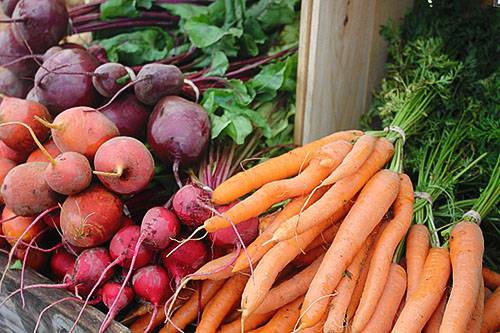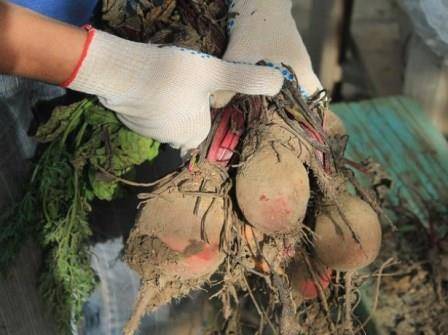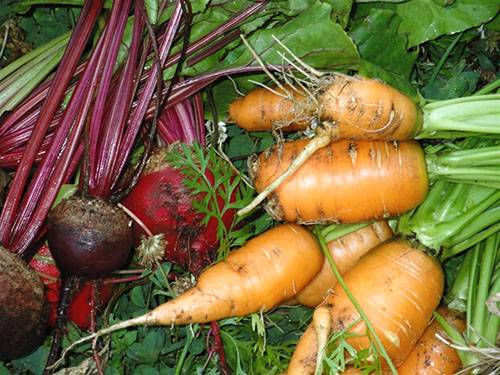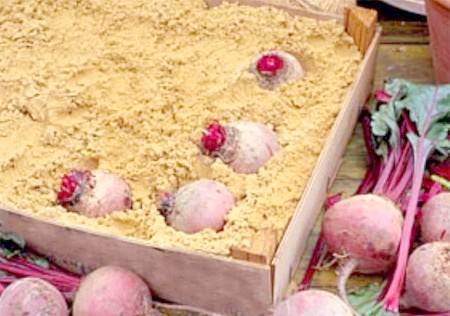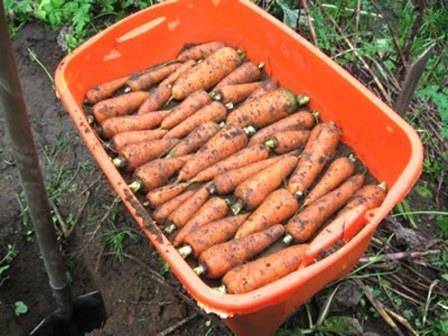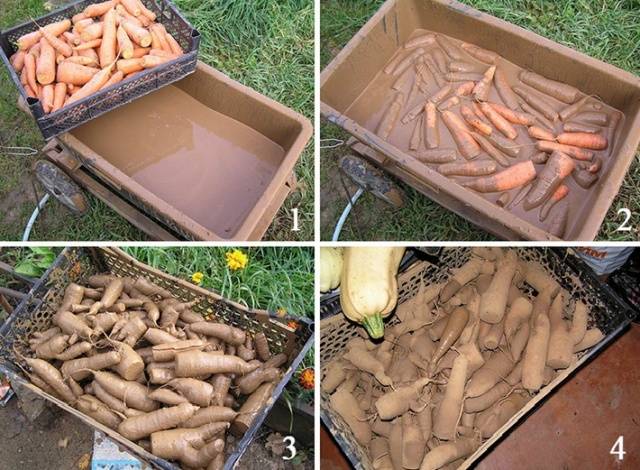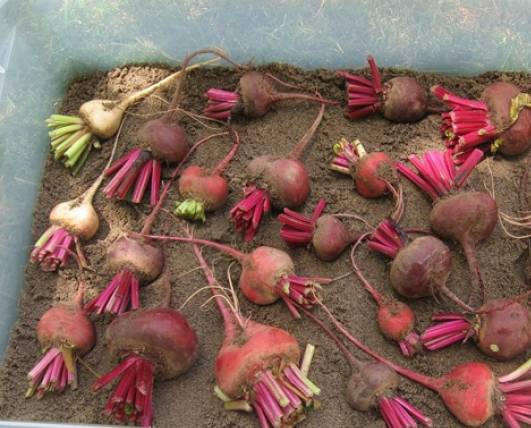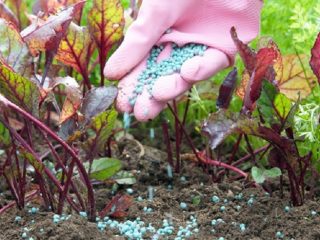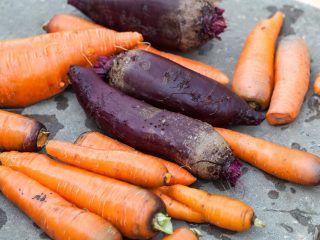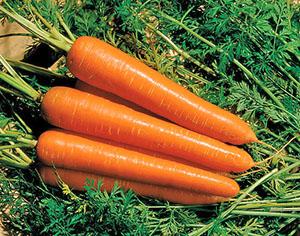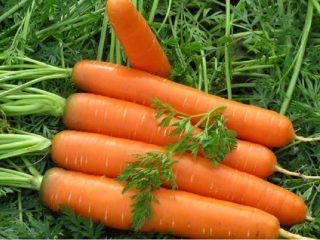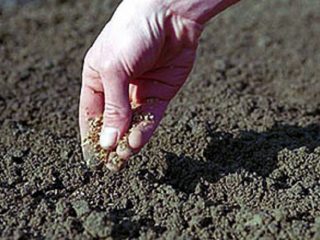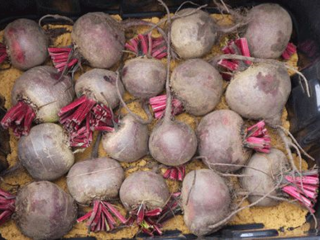Content
Harvesting beets and carrots for the winter is not an easy task. It is important to take into account many nuances: the time of harvesting vegetables, the storage conditions that you can provide for them, the duration of storage. Unfortunately, gardeners do not always manage to preserve beets and carrots. These vegetables require the creation of a special microclimate that does not allow them to get wet. There are many options for storing and preparing these vegetables, it is worth considering them in more detail.
Proper harvesting and preparation
Many articles have been written about how to store beets and carrots for the winter. I would like to pay special attention to their quality selection in preparation for winter storage.
- Root vegetables must be harvested when ripe. Don't dig them up ahead of time.
- When removing them from the ground, do not damage the skin. Specimens cut in half with a shovel are also not suitable for harvesting for the winter.
- Specimens selected for storage are carefully examined. Any hint of pests or disease is a reason to put the root crop aside.
- Washing beets and carrots will lead to rapid spoilage. If harvesting occurs from wet soil in the rain, the vegetables must be dried a little and cleaned of any residues with your hands.
- Under no circumstances should the ponytails be cut off. Without them, you will not preserve the fruits of your labor until spring.The fact is that they help the tuber not to lose moisture.
The right approach and compliance with all conditions will preserve the taste and juiciness of the crop for quite a long time.
It is important to know not only how to properly store beets, but also when to dig them up. For her, the digging period begins when the tops turn yellow en masse. Carrots feel great in the ground even until October. So if the weather is not very rainy, you can take your time cleaning it.
What housewife doesn’t want to please her household with crispy carrots or beets in winter? Let's try to figure out whether it is really so difficult to keep carrots and beets in good condition until next spring.
Methods for storing beets and carrots
There are several time-tested ways to preserve your harvest until spring. Many housewives use them to enjoy aromatic and fresh vegetables during the long winter. Depending on the storage location and conditions, we each choose a method to our liking.
Proper storage requires compliance with the conditions of preparation and laying of vegetables. Regardless of the method chosen, rotten, worm-damaged root crops should not be planted for the winter.
It is worth remembering that in apartment conditions it is impossible to achieve the required temperature and humidity, as in the cellar. It is in the basements that a good microclimate is created for winter storage of vegetables. It is worth mentioning that all the methods below are suitable for both beets and carrots and are, in fact, universal.
In plastic bags
Those who live in an apartment often face a dilemma: how to store carrots if there is no cellar or basement. Tubers are placed in bags of 7-10 pieces.You should not form too large bags - beets, like carrots, in this case can quickly begin to rot. For ventilation, they either make small holes in the bags or simply do not close them. To be safe, many housewives arrange vegetables with fern leaves. This is additional protection against damage.
In sand
Store carrots and beets, sprinkling with sand is considered one of the most effective methods. There are several nuances here.
- Firstly, the sand used should not be wet, just slightly damp.
- Secondly, for 10 kg of sand you need to add about 200 grams. chalk or slaked lime. It is in this mixture that a special alkaline environment will be formed, in which carrots, like beets, feel great.
To properly preserve carrots and beets, use a wooden box. Its bottom is covered with a layer of sand, about 5 cm thick. After this, carrots are laid. But there should only be one layer of carrots. Sand is again laid on top of it so that the first and second layers of vegetables do not come into contact with each other.
The beets are placed in separate boxes. You shouldn't put both types of vegetables together.
A stand is prepared for the boxes - approximately 10-15 cm above the floor level. Don't bring them too close to the walls. This little trick will prevent excess condensation from forming inside the container when the temperature changes. Once everything is in place, you can cover the boxes with a lid.
When storing crops using this method, it is important to know that the total quantity in one container should not exceed 20 kg. Otherwise you will end up with a lot of layers. If the crop begins to rot in them, it will be extremely difficult to notice.
In the sawdust
For storage, we select only root vegetables that have been cleared of soil, not rotten or wet.The difference with the previous method is only in the raw materials used. Sand is very heavy, so many housewives prefer to use sawdust instead. Carrots should not be pre-washed if they are to be stored in sawdust.
In onion skins
To store beets in an apartment without a garage or basement, you need to stock up on a large amount of onion peels and canvas bags. Fill the bags about three-quarters full with beets or carrots, mixing with the husks. This way, you can store different types of vegetables together. The main thing is to choose a darker and cooler corner.
In clay
The harvest is stored well in clay. This method is suitable for both beets and their cousin, carrots. The only drawback is that you will need to find such a large amount of clay somewhere.
First, the raw materials are prepared in a special way. To do this, it is diluted to the consistency of sour cream. On average, you get half a bucket of water per bucket of clay. The mixture sits for about 20-24 hours, during which time all the lumps will dissolve. It is necessary to stir it from time to time.
The mixture is again poured with water, it should cover the clay. The solution is left in this state for about 3 days. After this, you can begin installation.
We take a plastic bag and cover the box with it. One layer of beets is laid out on the bottom. Clay prepared in advance is poured into it. The beets take several hours to dry. Then comes the next layer. And so on until the box is full. All that remains is to cover it on top with polyethylene and a lid.
Of course, performing such a procedure at home is very problematic. The process is quite messy. It is better to do this outside or in the basement.
Beets can be stored in a garlic mash. Before you start pouring vegetables, they are kept in garlic infusion.A glass of garlic is passed through a meat grinder. It is infused for several hours in 2 liters. water.
The clay solution is prepared in the same way as described above. When beets collected and cleaned of dirt, it is soaked in a garlic solution for several minutes, then dipped into clay. The coated root vegetables are laid out to dry and then placed in pre-prepared boxes.
Even at low temperatures, beets will not freeze and will retain their color and aroma.
Not only beets, but also carrots feel great in clay solution; until the end of winter they remain juicy and tasty, as if they had just come from the garden.
In the ground
A good and proven way to get crispy carrots right after the winter cold, by the first rays of spring, is to bury them in the ground in the fall. In many villages this is what they use. Of course, there are some peculiarities. First you need to choose a place. In order for root crops to retain their appearance, you need to choose the driest place, which is cleared of snow first.
Next, you need to dig a hole about 1 meter deep. Correctly shaped carrots are placed in it. You should not put more than 1.5-2 buckets of beets or carrots into one hole.
At any temperature outside, vegetables will not freeze under a layer of snow and soil. In the spring, in March-April, they need to be dug up.
The disadvantages of this method include the fact that your vegetables can be found by rodents. No one is immune from this. In addition, it is only suitable for those who live in their own house and have their own garden.
Conclusion
Storing carrots and beets is not an easy task. But what to do with those specimens that are not suitable for laying before winter? They can always be frozen, dried, or preserved.
If you know other ways to store vegetables for the winter, be sure to write it to us in the comments. We will be glad to receive your advice and comments.
